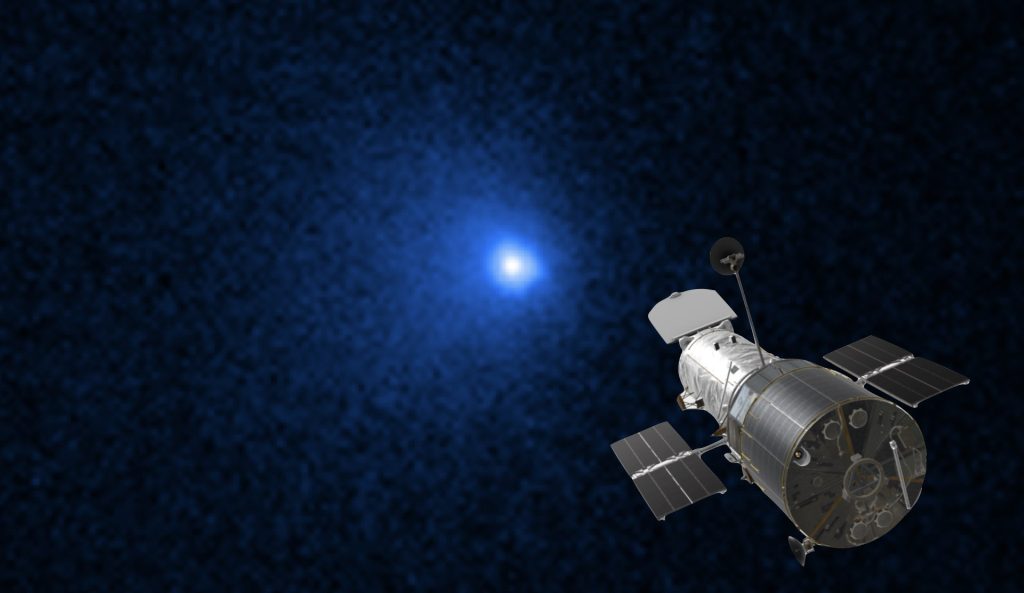
Hubble measures Bernardinelli-Bernstein’s comet
indexed C/2014 UN271This comet was found by astronomers Pedro Bernardinelli And Gary Bernstein. However, don’t imagine them scanning the sky with a telescope for the hairy star. They used a computer algorithm to search the observing archives, in this case the dark energy survey catalog of the Cerro Tololo Inter-American Observatory in Chile.
comet record
If the discovery is formalized in June 2021, the comet’s number (C/2014 UN217) refers to 2014, because it appears on dark energy survey images dating back to October 2014! So we understand the interest of the work based on the analysis of this type of astronomical archive.
To describe C/2014 UN217, or Comet Bernardinelli-Bernstein, the ALMA radio telescope in Chile. The obtained data indicated a core 137 km wide at +/- 17 km. The Hubble Space Telescope which links NASA and the European Space Agency (ESA) and was then used on January 8, 2022.

The image on the left is a Hubble shot of Comet Bernardinelli-Bernstein. In the center, a theoretical model of his hair (or coma) from which astronomers deduced the size of the core (on the right) estimated at 119 km.
Credit: Science: NASA, European Space Agency, Man To Hui (Macau University of Science and Technology), David Jewett (UCLA) / Photography work: Alyssa Pagan (STScI)
By comparing the space telescope image with a theoretical model of the comet, the scientists calculated a 119 How big is the nucleus? at +/- 5 km. According to NASA, this is actually “The largest comet nucleus ever».

Comparison of the largest known and observed comet nuclei. Pictures are representations of the artist.
Credit: Cité de l’Espace from NASA, ESA and Zena Levy (STScI)
Indeed, a “comet” could “steal” this record from Bernardinelli-Bernstein. that it Chiron Which orbits between Saturn and Uranus with a size of 166 km. Chiron has been classified as a Centaur-like asteroid, however it showed a hair and tail during observations in 1989 making it considered an asteroid comet. However, its classification remains asteroid.
It will pass very far from Earth
Because of its trajectory, Comet Bernardinelli-Bernstein is likely to come from Oort cloud. Theorized by Dutch astronomer Jan Oort (1900-1992), it is a large group of small bodies that surround the Solar System at more than 30,000 astronomical units from the Sun, 30,000 times the distance between the Earth and the Sun or roughly half a light year. ! This cloud, which could extend up to 100,000 AU, would be a kind of “reservoir” for comets, bodies “left behind” during the formation of the planets more than 4 billion years ago. Like other comets, Bernardinelli-Bernstein bears witness to the conditions that prevailed at the birth of our solar system. However, it will not come close to us since its earliest in 2031 1.6 billion kilometers will pass from our starslightly further from Saturn and therefore far from Earth.
Below is a NASA video of Hubble’s observation.

“Organizer. Social media geek. General communicator. Bacon scholar. Proud pop culture trailblazer.”
